Port aux Choix – Discovering Our First Nations
In the last post I described a once in a lifetime boat trip on Western Brook Pond so it is with some reluctance that after a few adventure filled days Alison and I leave Gros Morne National Park and head north on the Viking Trail. Although Gros Morne is without question the jewel of western Newfoundland, there is still a lot more to be seen and experienced on the Great Northern Peninsula. Add to that what southeastern Labrador has to offer and soon our feelings turn from regretful looking back to happy expectant thoughts on what lies ahead, starting with a visit to one of the most important archaeological sites in all of North America, Port aux Choix National Historic Site. Please join as as we explore a place that has been inhabited for over 7,000 years. But first an interesting stop on the way.
Arches Provincial Park
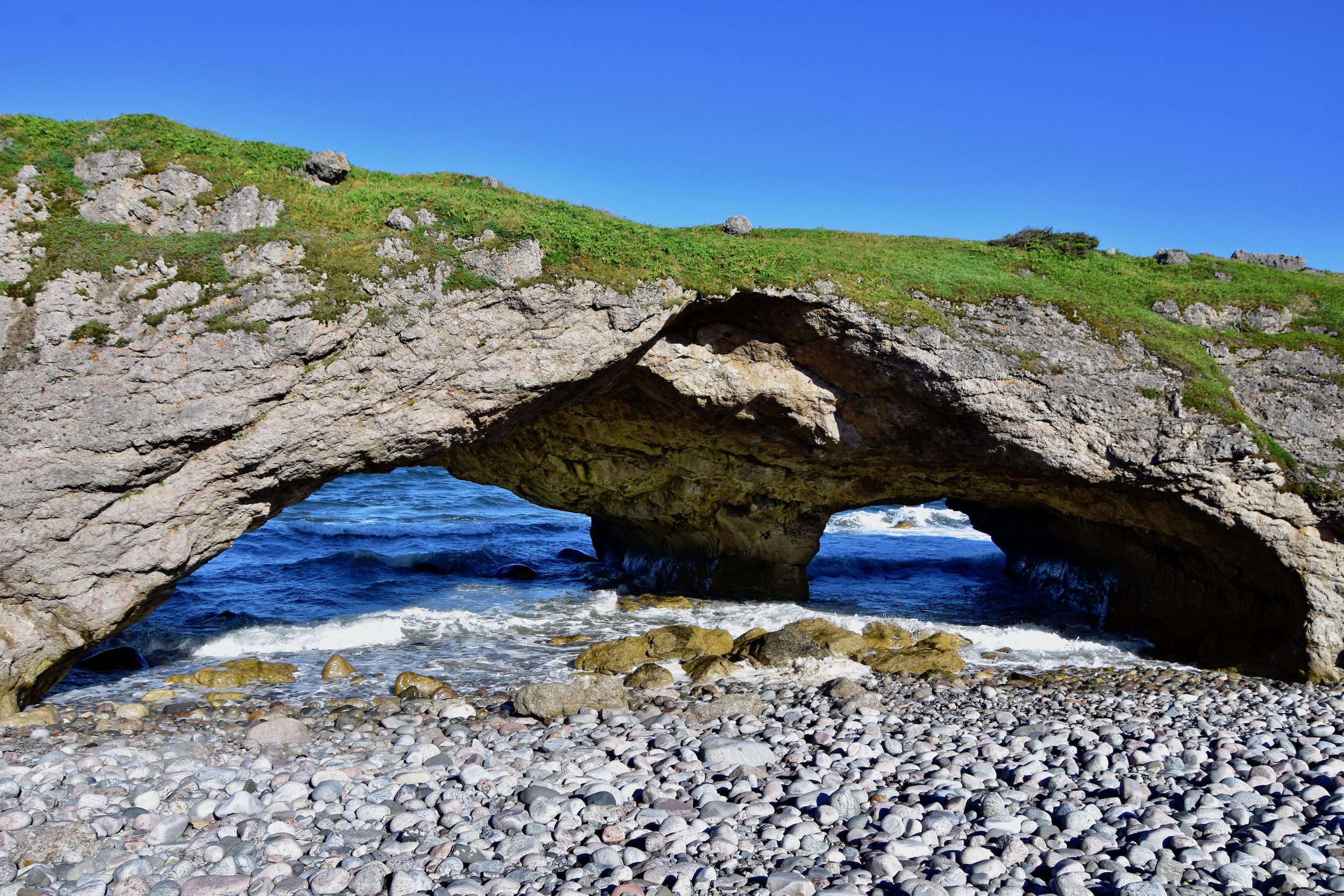
It is an absolutely gorgeous August day in western Newfoundland as we depart the Shallow Bay Motel in Cow Head and head towards Port aux Choix on the Viking Trail. On our right hand side the Long Range Mountains provide constant distractions and on the left the waters of the Gulf of St. Lawrence provide a kind of scenic tug of war between the two. It’s a wonder I can keep an eye on the road on what is one of the best sections of this great drive from Deer Lake to St. Anthony.
Not far out of Gros Morne is the turn off for Arches Provincial Park which is a must stop destination on the Viking Trail. It is not just the natural arches that you can see in the photo above, but the entire coastline in this area that is mesmerizing. This short video gives a better idea of why you should take the short walk from the parking lot to the beach.
Similar to what we found at the S.S.Ethie site, the rocks here are fascinating with their great variety of colours and shapes, as Alison discovered as she stooped over to find some great specimens.
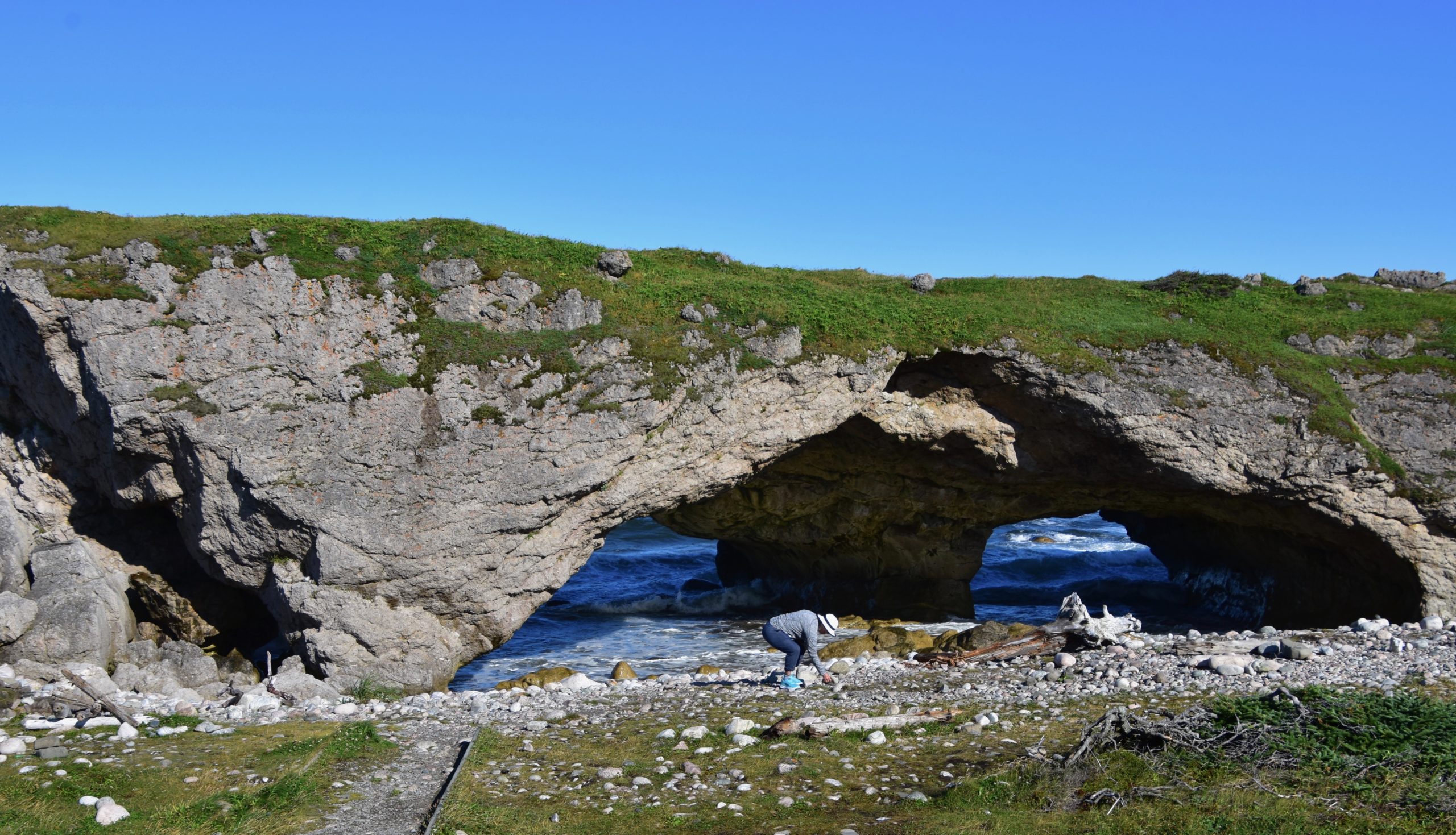
History of Port aux Choix
The town of Port aux Choix is some thirteen kilometres (eight miles) off the Viking Trail on a road that passes through the communities of Port Saunders and Gargamelle before arriving at the National Historic Site that is on the outskirts of the town. The town itself is quite photogenic with a fishing fleet, numerous wharves and colourful sheds. The name, like Port au Port, is a corruption of a Basque word – portuchua meaning ‘little harbour’ and dates back as far as the 16th century and perhaps even earlier. It was only in the late 20th century that historians and archaeologists came to the realization that the Basques had a major seasonal presence in western Newfoundland and southeastern Labrador perhaps even before John Cabot’s voyage to the area in 1497. Later on this trip we will visit the Basque whaling settlement at Red Bay, Labrador.
As discussed in my earlier post on the Port au Port peninsula, the right to fish the entire western coast of Newfoundland was ceded to France in the 1700’s and that right was not extinguished until 1904. However, permanent settlement by the French was barred and although there are descendants of the French and Acadians on the Port au Port peninsula, Port aux Choix is primarily an English based community of fairly recent vintage by Newfoundland standards.
So that was the history of Port aux Choix until the 1960’s when, by accident when digging the foundation for a movie theatre, an ancient burial site was uncovered. Archaeologists were stunned to find that the remains buried here dated back to around 2,000 BCE. It had been known that a later indigenous people called the Dorset had inhabited the area from roughly 200 to 600 A.D., but this new find was really something totally unexpected. Since this discovery archaeologists have found other burial sites in the Port aux Choix area and are now aware that at least four completely separate groups inhabited the area before either the Europeans arrived or the present day Indigenous groups on the island. In 1970 Port aux Choix was designated a National Historic Site.
Port aux Choix National Historic Site

The starting point for any visit to Port aux Choix N.H.S. is the Visitor Centre where you will learn about the various peoples who inhabited this area over the past 7,000 years. At the time of our visit portions of the centre were closed as they were being updated for accuracy and more acceptable terminology. Archaeology is a constantly evolving science that often replaces previously held ideas and nomenclatures with newer ones as more discoveries are made and more advanced techniques such as DNA sequencing are introduced. Therefore, what might be seen at the Visitor Centre in 2022 may differ slightly or even significantly with what Alison and I saw there in 2021.
The first question to ask is how were the burial sites found at Port aux Choix different than many Indigenous burial sites found throughout the Western Hemisphere? The difference is that the alkaline soils of the area did a remarkable job of preserving the human remains and the usually perishable items that an acidic soil would destroy over time. The other question is why did so many different peoples want to settle on what at first sight seems to be a pretty desolate and barren piece of land?
That is answered by looking at this painting which depicts the abundance of life on the land and the sea in this area of Newfoundland and Labrador. Fish and seals played a vitally important role in sustaining human life here over the ages.
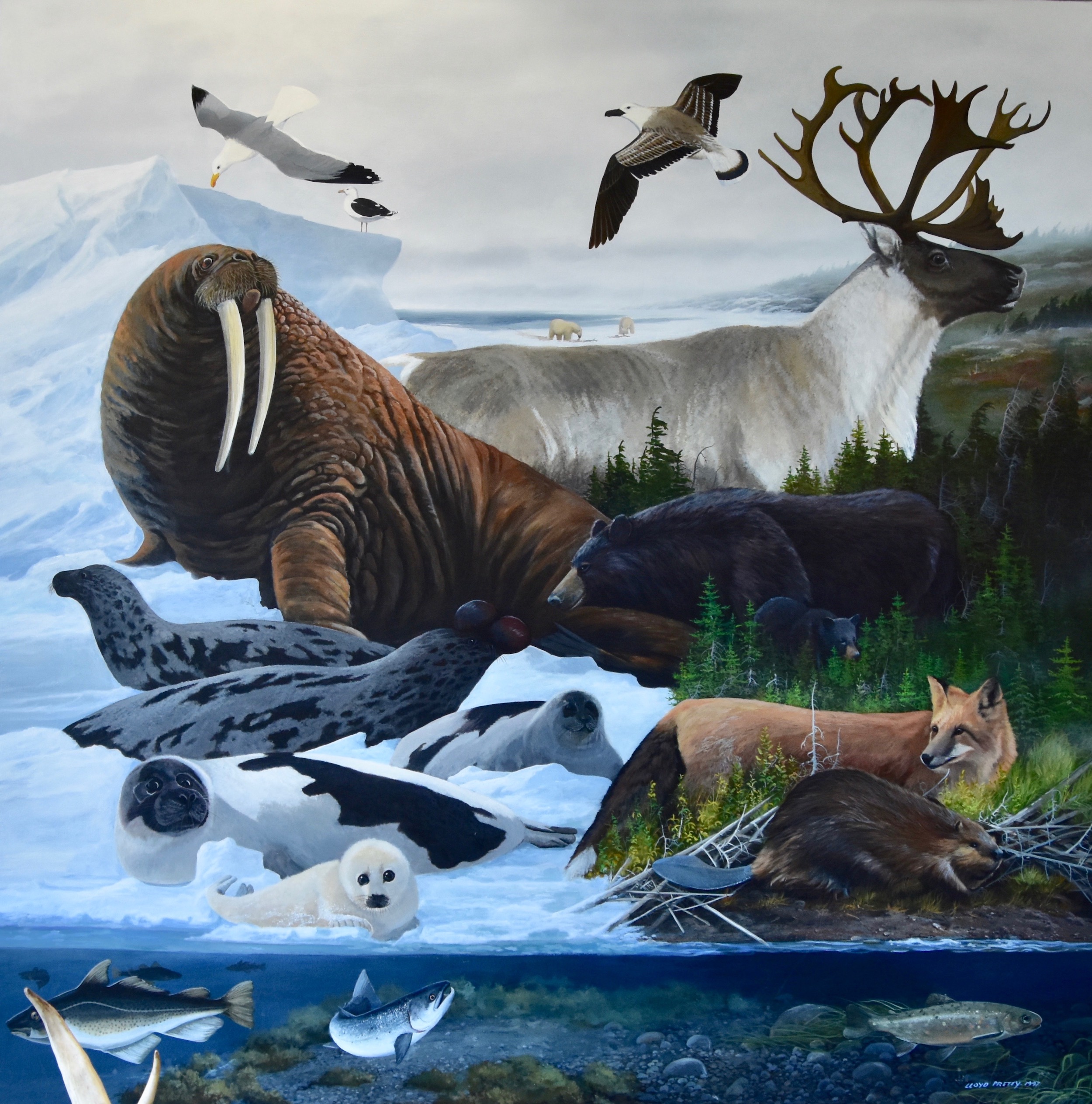
The Maritime Archaic Indians
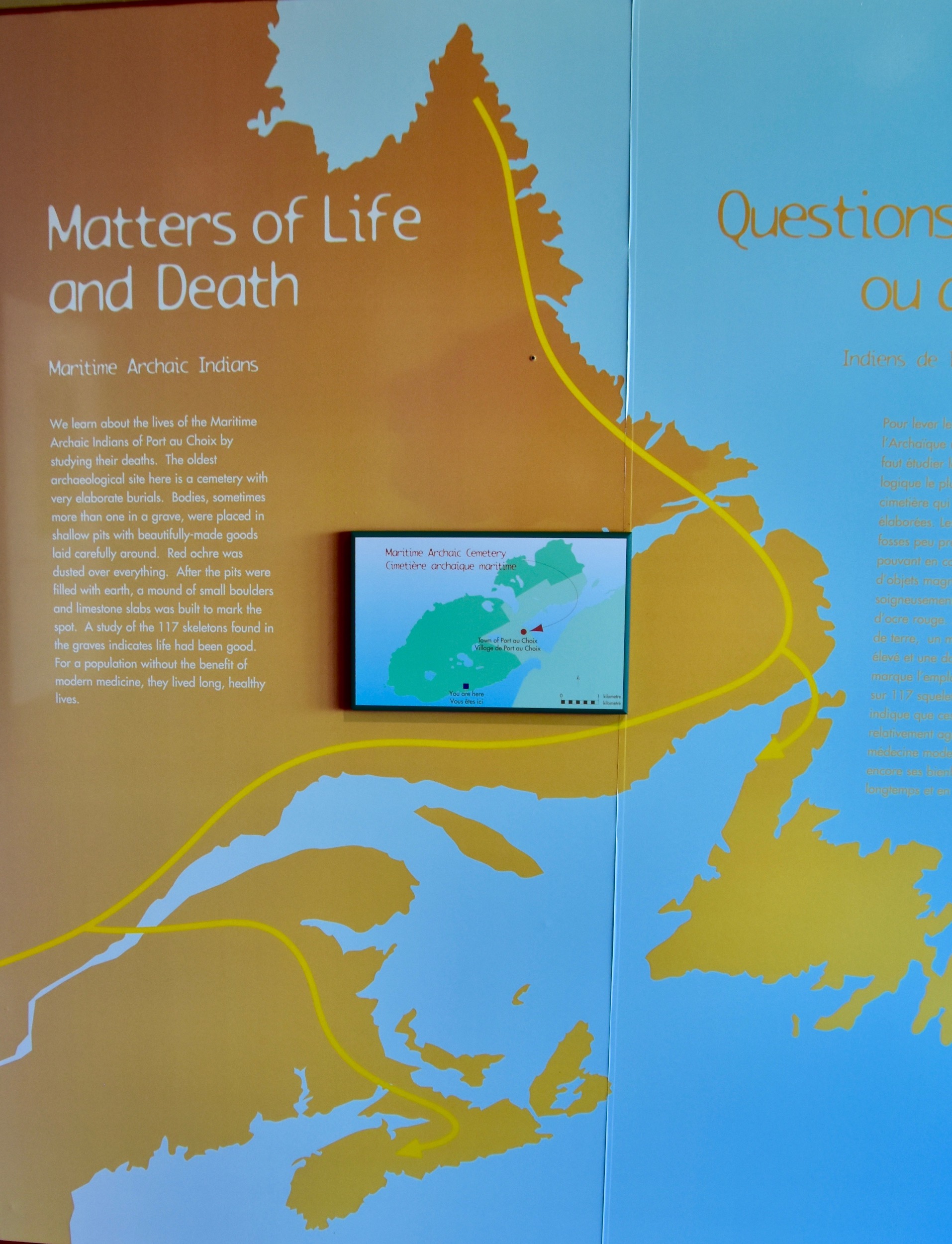
The first people to arrive at Port aux Choix were the Maritime Archaic Indians who, surprisingly to me at least, came from the north and not the west. Labrador, then Newfoundland and later Quebec and the Maritime provinces were home to these hunter/gatherers starting over 7,500 years ago. Later on this trip we will visit the oldest known grave in North America at Point Amour in Labrador where the remains of a 12 year old girl were buried. However, even before the Maritime Archaic people there were Paleoindians in Labrador up to 9,000 years ago. BTW the terms I am using to describe the various peoples are those used on the Port aux Choix website. I know that few Indigenous peoples today refer to themselves as Indians or Eskimos, but those terms are still used by archaeologists to distinguish certain groups that no longer exist. That may well change over time.
The 117 skeletons exhumed at Poirt aux Choix showed an active healthy population that had a high degree of sophistication in their tools and crafts. Here are a few examples of their hunting tools.
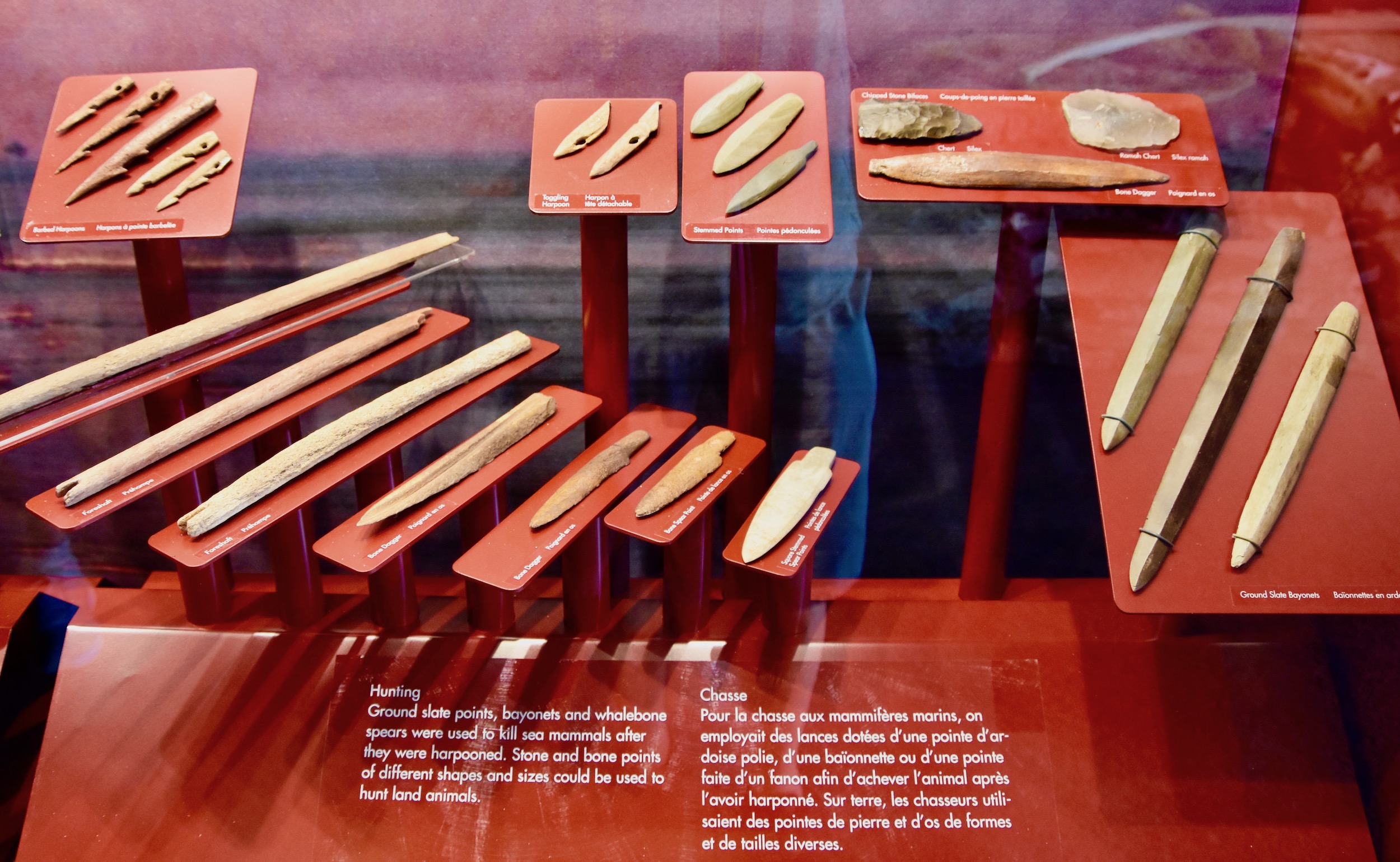
The painting above depicts a walrus, a species no longer found this far south, but it was not the only species that once was common here and is no longer around. These are beaks of the great auk that was hunted to extinction by 1844.
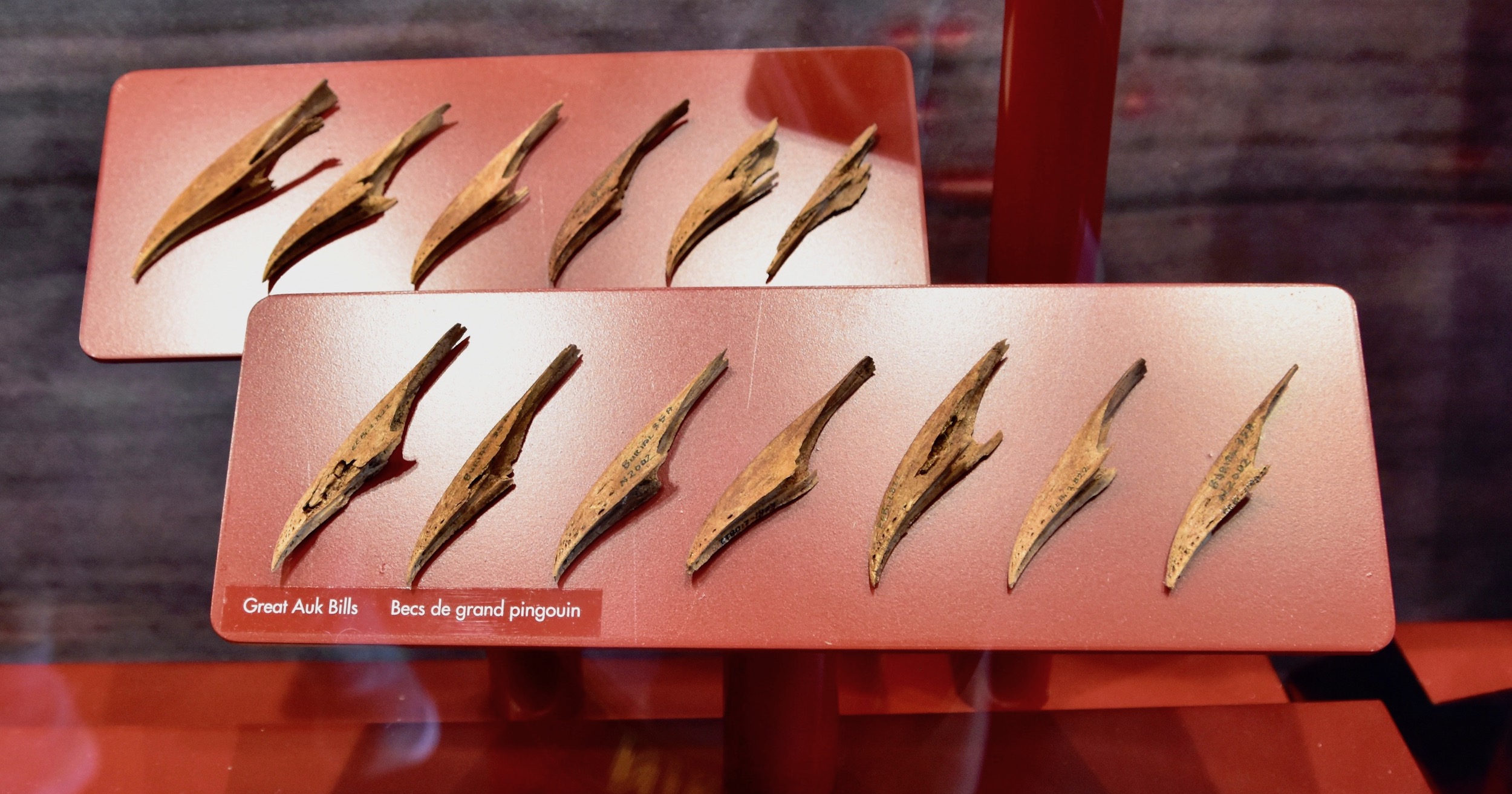
This is a stylized orca which the Maritime Archaic people may have considered as having great power, being the only other animal that was as efficient a predator as humans.
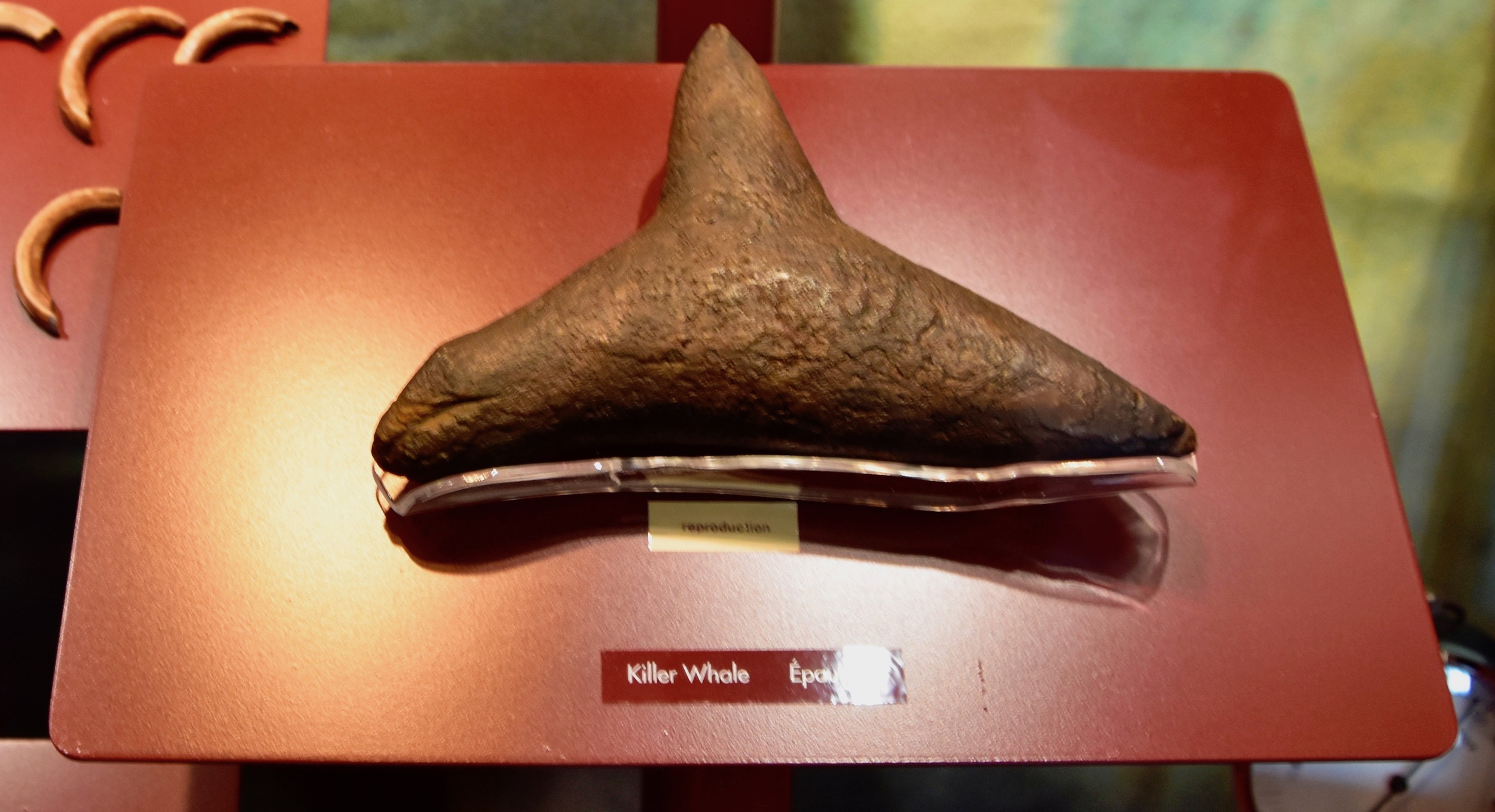
Much is known about the Maritime Archaic Indians, but there is one great unsolved mystery – what happened to them? They simply seem to have completely disappeared from the archaeological record about 3,000 years ago. In Labrador there is evidence that a new people, the Paleo-Eskimos arrived about the same time the northern Maritime Archaic Indians disappeared, but not at Port aux Choix where there is no record of human habitation for hundreds of years after their disappearance there. It is hoped that future archaeological undertakings may provide the answer.
The Groswater Paleoeskimos
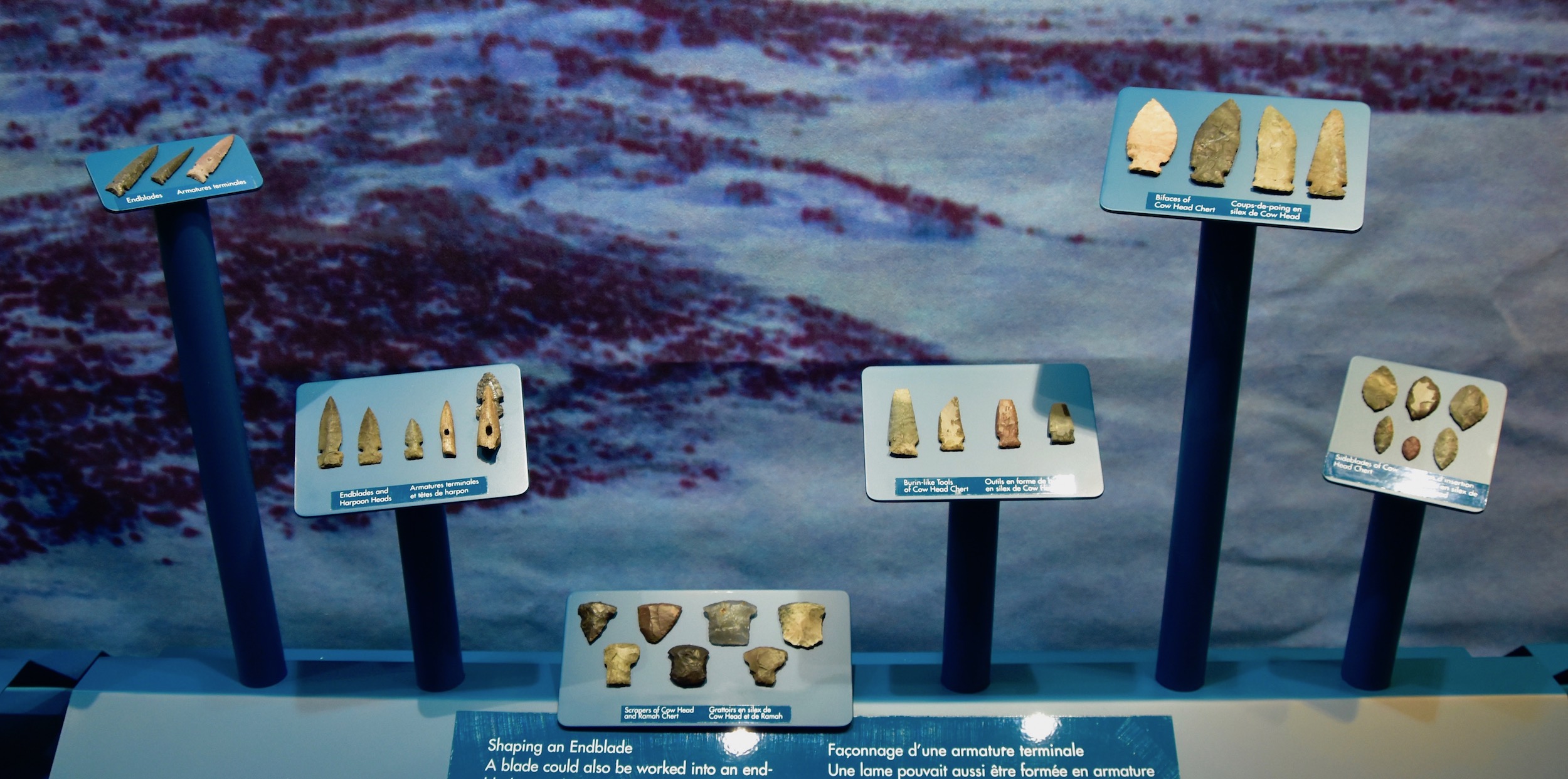
Moving on in the Visitor Centre you learn that the next group to occupy Port aux Choix were the Groswater Paleoeskimos who arrived approximately 800 years B.C.E. You also learn that these people had no ancestral connection to the current Inuit population of Labrador, but like the Maritime Archaic people were a distinct population that seems to have come and gone from history without leaving any living trace.
The Groswater Paleoeskimos occupied Port aux Choix on a seasonal basis and were heavily reliant on the seal migrations. When they were on the island of Newfoundland they would shelter in structures like the one below that used whale bones as a framing material. Despite the often freezing weather, inside these places were quite cozy.
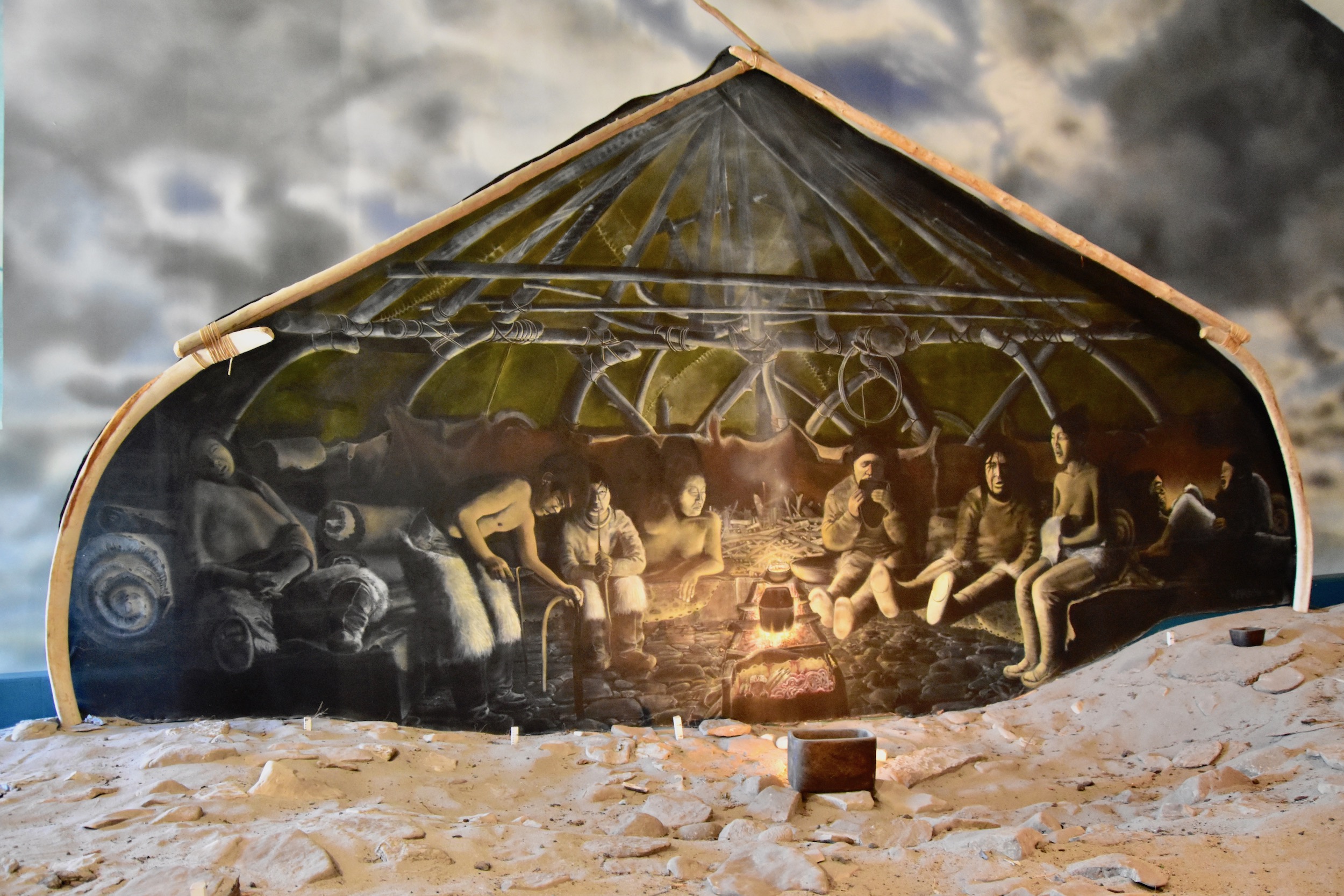
The Groswater Paleoeskimos did not last as long as the Maritime Archaic Indians, disappearing from Newfoundland around 200 B.C.E. and a little later from Labrador. The website Heritage Newfoundland & Labrador states that such extinctions were not uncommon and that ‘hunting was so poor that local bands died out’. In other words, they starved to death. This paints a picture that is in stark contrast to the widely held belief that life in pre-European contact North America was a veritable Garden of Eden with plentiful food sources at all times of year. Again, it is hoped that further archaeological study will provide a clearer picture of what really happened.
The Dorset Paleoeskimos
The next group to occupy the Port aux Choix area were the Dorset Paleoeskimos who also were not related to the current Inuit population. Their occupation of most of coastal Newfoundland was on a much more permanent basis than the Groswater Paleoeskimos. Excavations at the Phillip’s Garden site on Port aux Choix have revealed what appears to have been a small permanent settlement of over fifty houses. Artifacts found here span a range of seven hundred years from 2000 to 1300 years ago. This seems to contradict the description below which suggests smaller groups and seasonality. My information comes from the Parks Canada Port aux Choix website and demonstrates how more modern archaeological techniques can almost completely change the traditional thinking.
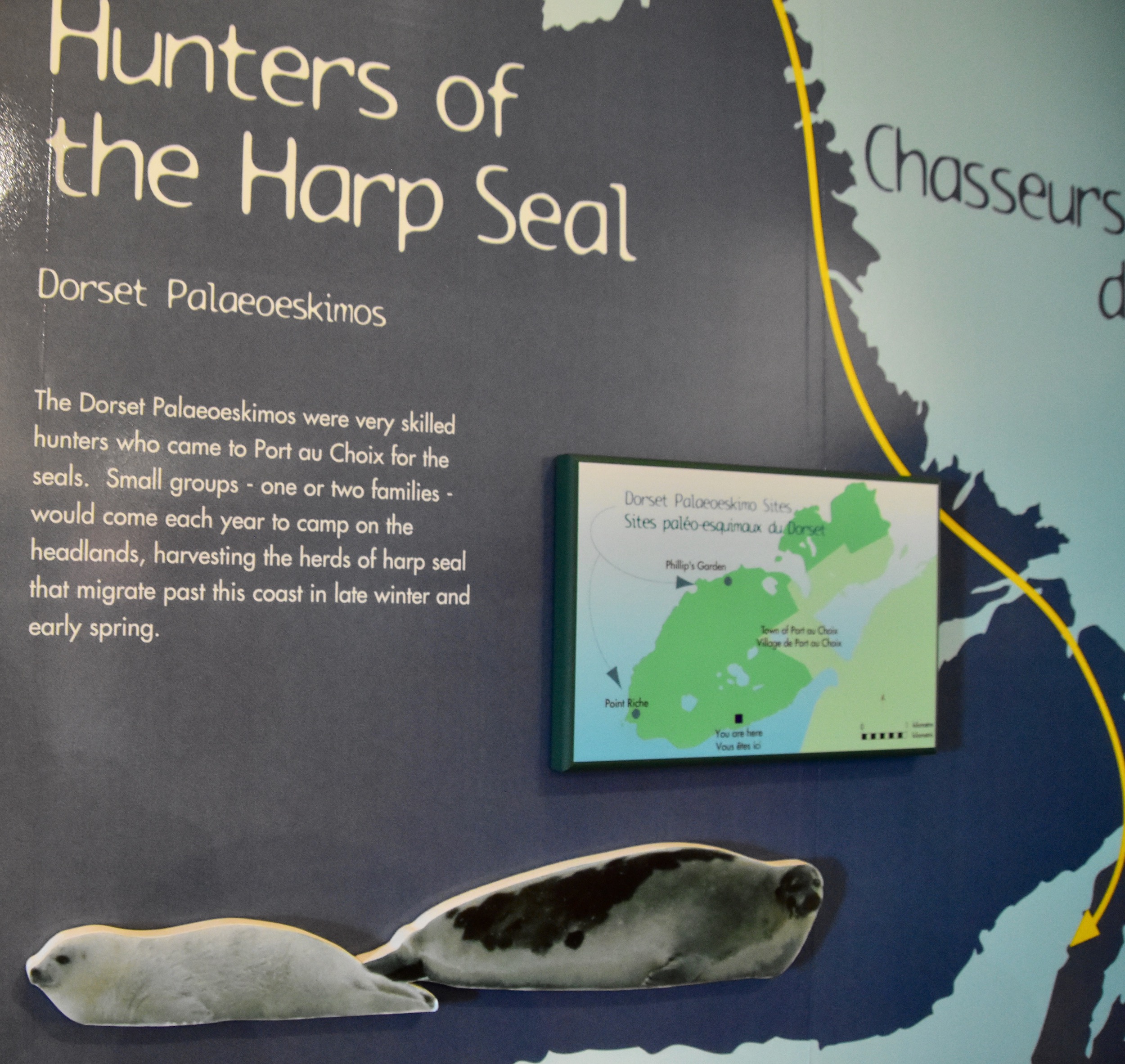
The Dorset Paleoeskimos appear to have a culture that differed dramatically from the Groswater and Maritime Archaic peoples. For the first time soapstone is used, seal oil is used as fuel rather than wood and kayaks made from seal skins allow for much more flexibility in hunting. Also, polar bear amulets are common.
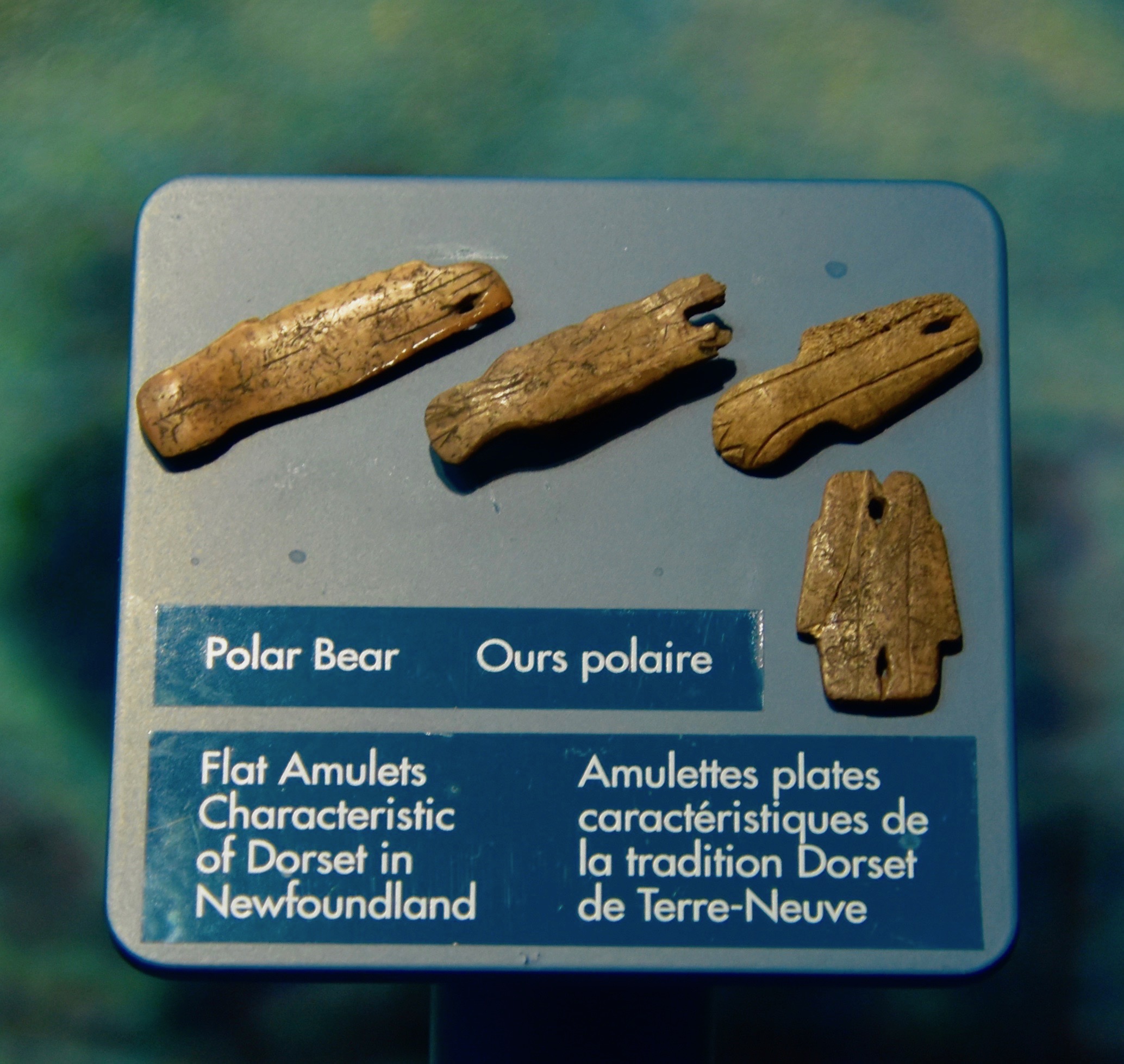
The one similarity that these Dorset people had with their predecessors is that they too disappeared from history. Around 1300 years ago they were no longer at Port aux Choix and by 1100 years ago gone from Newfoundland entirely. They did survive in Labrador up until 600 years ago. Again, the reason for their disappearance is unknown, but for the first time competition from competing groups, the Thule who are the ancestors of the present day Inuit and the Beothuks, is a very real possibility. It’s obviously a very complicated and controversial area for archaeologists to tackle.
The Beothuk Ancestors at Port aux Choix
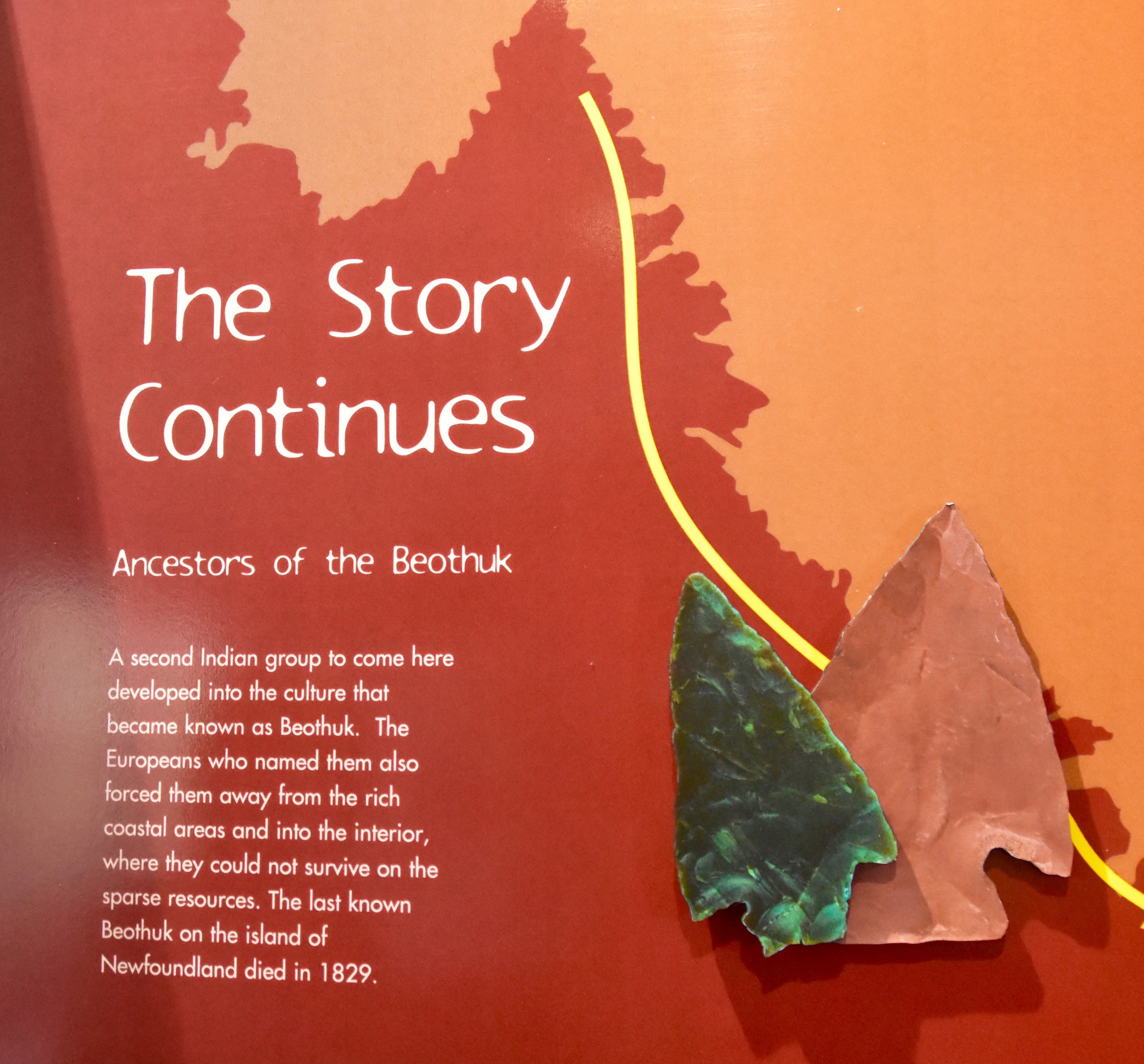
The fourth distinct group to occupy the Port aux Choix area were the ancestors to the people the Europeans called the Beothuks. Archaeologists name them the ‘Recent Indians’ and they arrived on the island of Newfoundland around the time the Dorset Paleoeskimos disappeared. It was not until the 1990’s that it was established that these people had a presence at Port aux Choix from at least a thousand years ago although elsewhere on Newfoundland their presence dates as far back as 2,000 years. Their lifestyle was much closer to that of the Maritime Archaic Indians than the Paleoeskimos, being less reliant on the sea than these latter peoples and more tied to the land. The reason their presence was not detected at Port aux Choix until so recently was that their settlements were in the same place as the modern town and thus evidence of their existence was probably largely destroyed by more modern structures.
Unlike the first three civilizations or nations at Port aux Choix, we think we know exactly what happened to the people who by 1700 were called Beothuks by the Europeans who were by now occupying pretty well all of the Newfoundland coast. Read this post from the Heritage Newfoundland & Labrador website for an explanation of the extinction of the Beothuk people. I used the words ‘we think we know’ because in 2020 a Memorial University professor found evidence of the same genes that were extracted from the teeth of two Beothuk remains that were repatriated to Newfoundland from Scotland, in various living people today. Just as it is now known that some people carry Neanderthal genes, it seems highly probable that some Beothuk women interbred with other Indigenous groups and thus while ‘culturally extinct’ the actual lineage is not. The science of mitochrondial DNA testing promises to uncover many more unknown connections as it develops.
Visiting Port aux Choix really gives one pause to think of the impermanence of any culture or society in the face of changing climate, evolving diseases or any one of a number of factors. I have little doubt that each of the peoples who occupied Port aux Choix probably assumed that their existence there and way of life would continue forever. They did not have the science and the knowledge it provides that we have today. It is hubris on our part to think that our way of life will continue unabated if we do not heed the lessons that archaeology has taught us from places like this.
There is more to see at Port aux Choix than just the Visitor Centre. From there you can take a 3km. (2 mile) hike out to Phillip’s Garden, one of the most important archaeological sites in Canada. From there you can hike to Pointe Riche another 3 kms. all along the barren limestone coast that is one of the most unique geological features of the Great Northern Peninsula.
If you don’t have the time or the inclination to hike, you definitely should make the short drive to Pointe Riche. There you will find this Dorset monument and the photogenic Pointe Riche lighthouse.
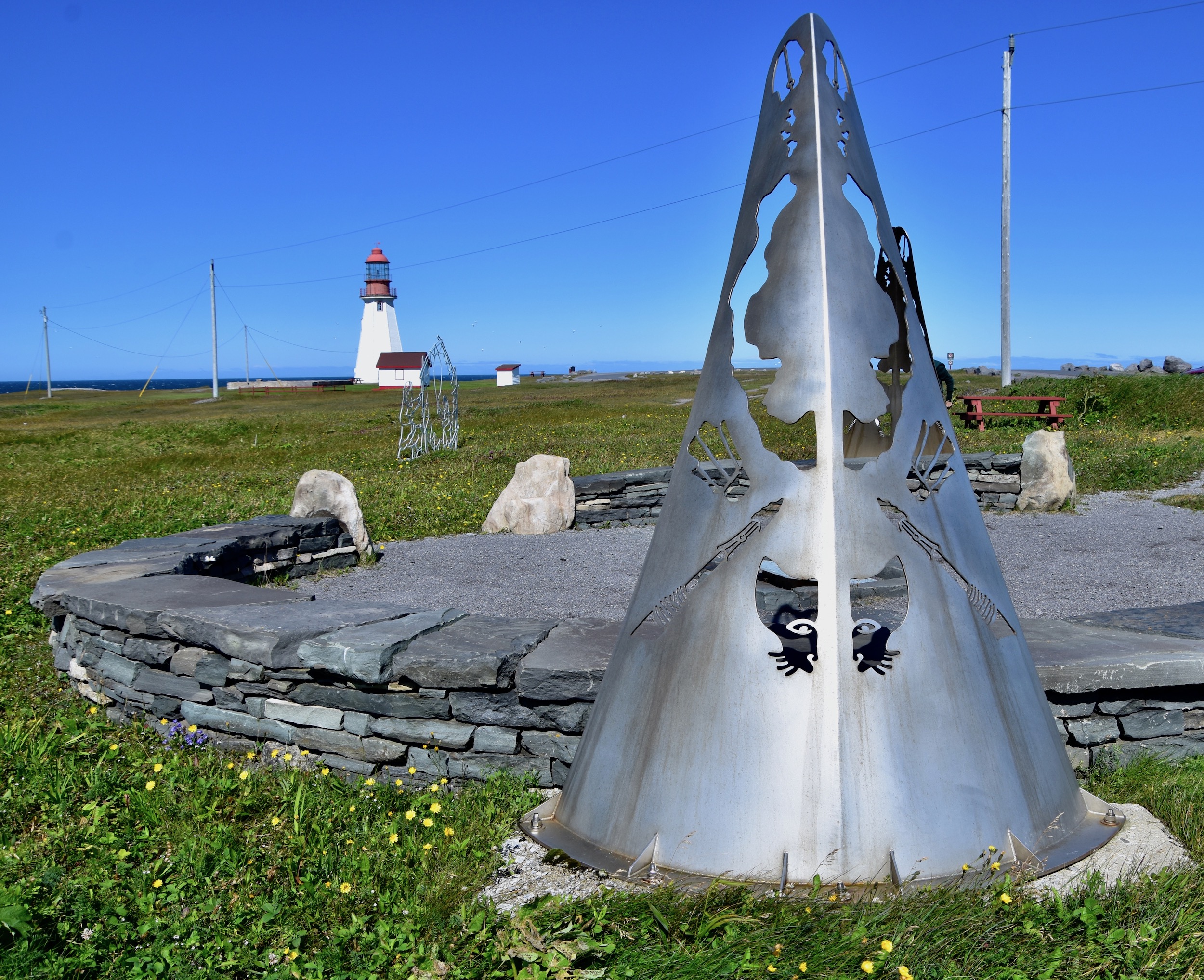
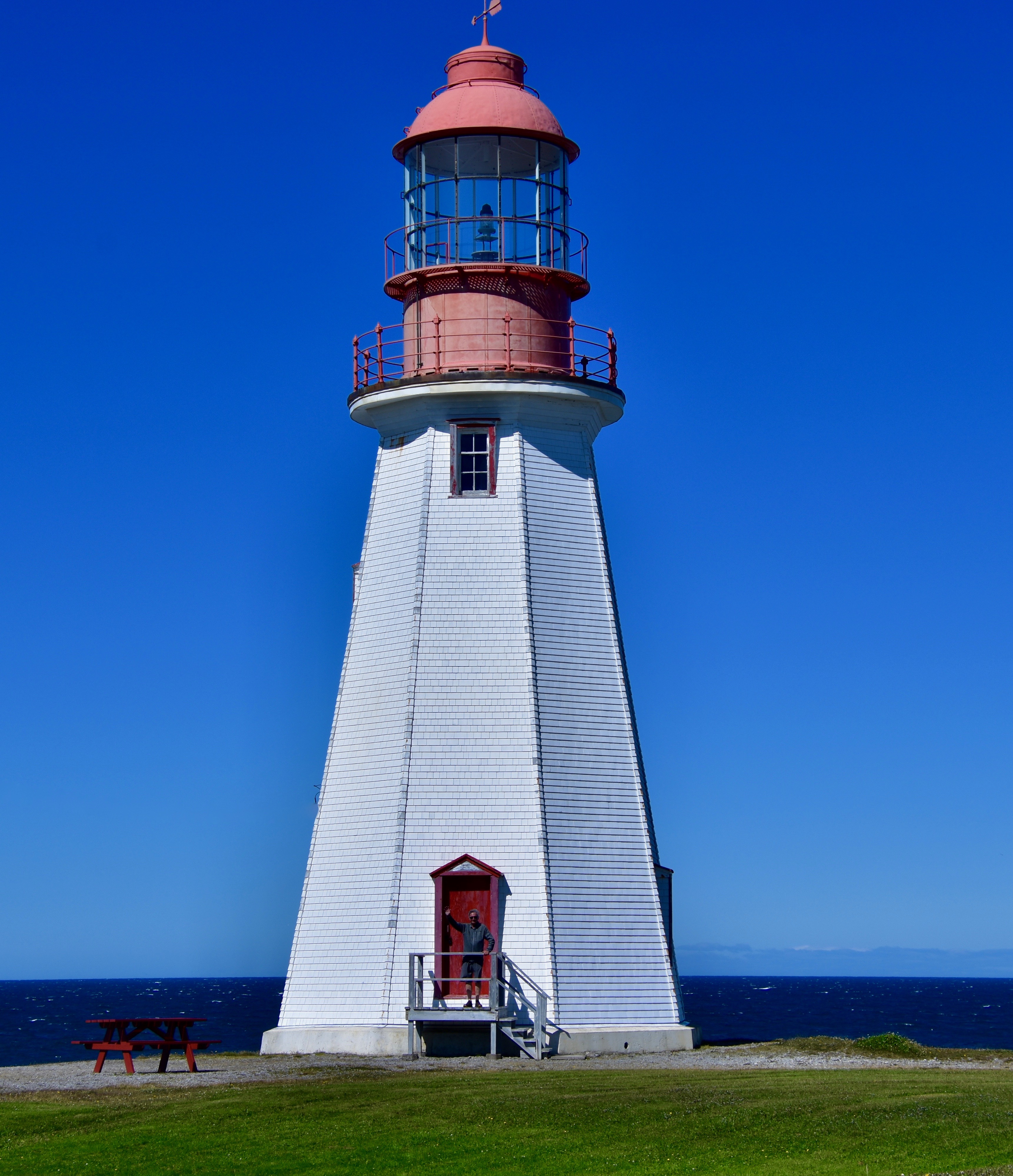
Pointe Riche itself is worth viewing from the Parks Canada red chairs on site, although it’s usually pretty windy so you’ll need to hold onto your hat.
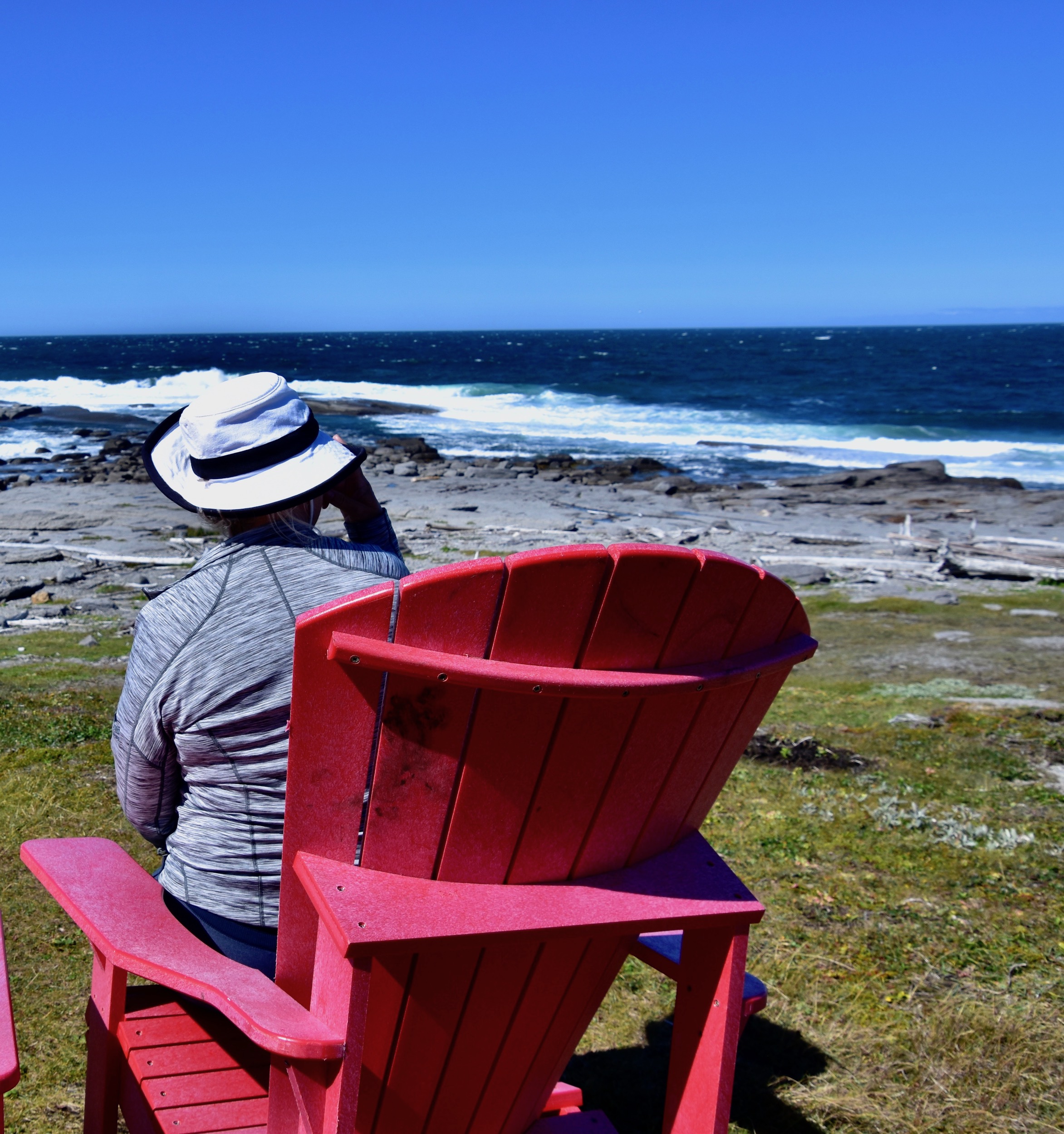
Lastly, this may be your best chance to see a caribou in Newfoundland. There is a small herd that is usually found in the Pointe Riche area and they are used to people wanting to photograph them, like this mother and calf.
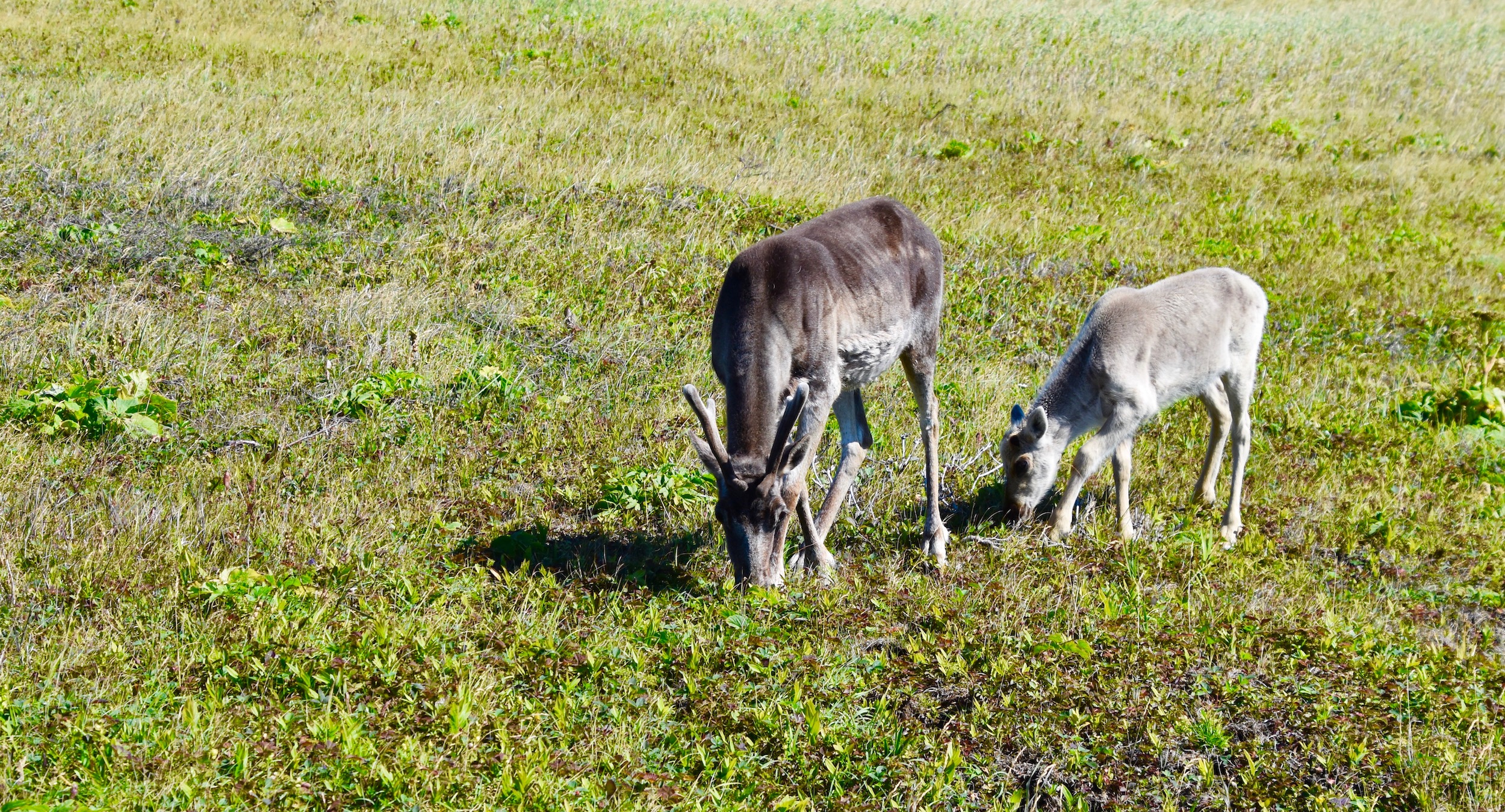
Before you leave Port aux Choix ask for directions to the site within the town where the first Maritime Archaic cemetery was unearthed. It is memorialized with this plaque and is marked as sacred ground to the First Nations.
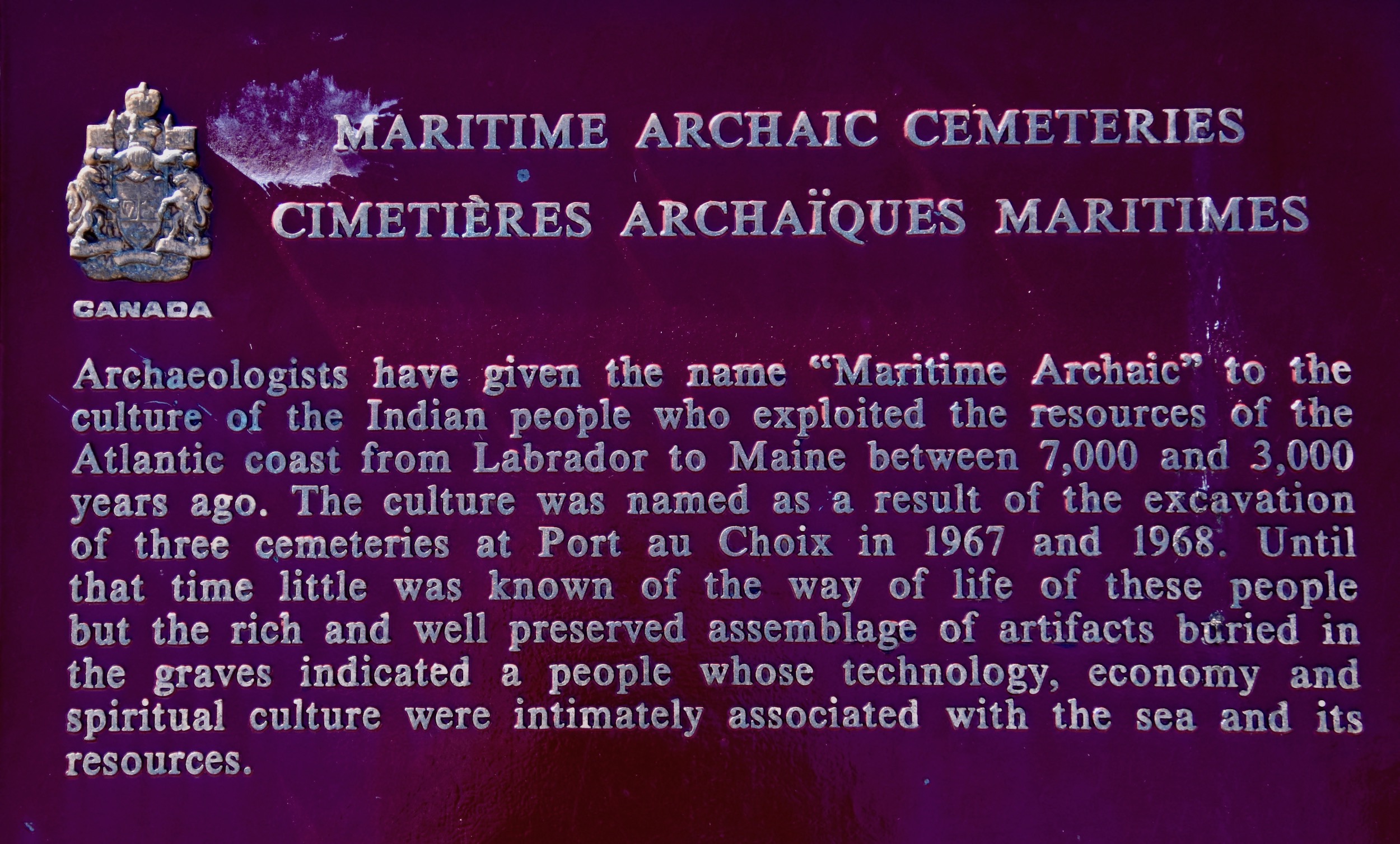
In the next post we’ll cross the Strait of Belle Isle and begin our exploration of Labrador in the province of Quebec. Confused? Join us and find out why.

